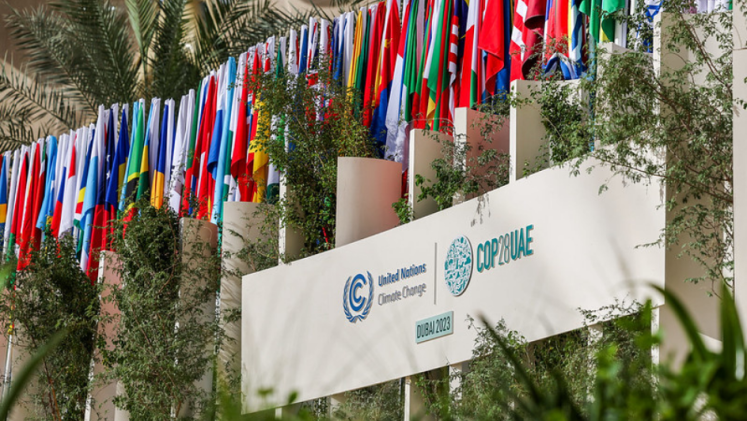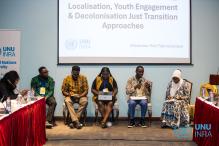COP28 unfolds against the backdrop of a record-breaking year in global temperature increases and escalating climate impacts. Recent months have been marked by war and conflict, diverting much-needed political attention from the climate crisis. However, it is anticipated to be the largest climate summit yet, as COP28 expects over 70,000 participants. The United Arab Emirates, in its COP presidency role, has invited Heads of States and their envoys to the World Climate Action Summit on 1 and 2 December. Previous Climate Summits have witnessed the launch of numerous international initiatives, many of which have become integral to the COP agenda. The Local Climate Action Summit will be held in the first week and will mobilize national and subnational actors for climate action at the city and local levels. Ministerial declarations are anticipated on the topics of health and climate, as well as climate and sustainable agriculture. Thematic days will guide stakeholder action throughout the two weeks as well.
While new initiatives and alliances are crucial in addressing the climate crisis, in focus will be the growing emphasis on reporting progress to ensure greater accountability for current and future actions. COP28 offers a critical opportunity to reset international climate action, reinforce multilateralism and deliver a much-needed message of cooperation in times of increasing crises.
UNU-EHS experts have provided three key insights on what to follow and what to expect at COP28:
Global Stocktake: What’s been done and where we go next
COP28 comes at a critical juncture. It represents the culmination of the Global Stocktake (GST), which is the process for assessing the collective progress of countries towards implementing the goals of the Paris Agreement. The Paris Agreement in itself provides legally binding commitments to countries to prepare and report on their climate policies or Nationally Determined Contributions (NDCs). The GST informs the next round of NDCs and with that is a critical tool to raise climate ambition over time.
In September, the GST synthesis report was published after a comprehensive two-year process of information gathering and technical evaluation. The report underscored several critical points, highlighting that climate progress is falling short, that deep transitions are bound to affect all sectors and geographies and that inclusivity and equity are key enablers towards clean energy and resilient economies.
At COP28, countries will make political decisions based on the GST. These decisions include:
- Which messages get elevated to political decisions and become the reference point for future actions and decisions
- What follows from the GST and what it means for the formulation of NDCs that countries must submit in 2025
- How the outcome of the GST will be captured and what concrete signals can be taken for international climate action especially before 2030.
The bottom line is that the decisions made at COP28 will not only influence immediate actions but will establish a precedent for future Stocktakes.
Loss and damage fund & funding arrangements
Following the decision at COP27 to initiate funding arrangements and a fund to respond to climate-related loss and damage, it is now on COP28 to deliver on the details. Throughout the year, a Transitional Committee held five key meetings, drafting a governing instrument for the fund and respective draft decisions.
The text that resulted from these meetings represents a compromise between the Parties, with the intention for the fund to work on climate-related emergencies, reconstruction and recovery. The fund will focus on priority gaps in the current system and it will follow a country-driven approach. It will be accountable to the UNFCCC, governed by a board with a developing country majority, and will be hosted for the first four years at the World Bank. While all developing countries which are particularly vulnerable to climate change are eligible to access the fund, there are provisions for a minimum allocation to Small Island Nations and Least Developed Countries. To enhance and coordinate the funding arrangements, the draft decision put forward a call to create a yearly high-level dialogue with the new loss and damage fund and the UN Secretary General.
In addition, COP28 needs to decide on the host for the Santiago Network. The Santiago Network is the technical arm of the UNFCCC loss and damage agenda, and is expected to provide concrete capacity-building and technical assistance.
Turning the Global Goal on Adaptation into action
The Global Goal on Adaptation (GGA) is part of the Paris Agreement and aims at enhancing adaptive capacity, strengthening resilience and reducing vulnerability to climate change. However, the overriding question that hopefully will be answered at COP28 is whether the GGA is mostly operationalized to monitor progress on adaptation or if the priority is to drive adaptation action with ambitious goals and a follow-up process.
To this end, COP26 in 2021 launched the Glasgow – Sharm el-Sheikh Work Programme (GlaSS). The GlaSS initiative was marked by eight workshops throughout 2022-2023, which worked towards a framework for the GGA. COP28 is now expected to conclude that work and identify the next steps. However, many issues are still open, including how much of the framework will be operationalized nationally, how it builds on concrete targets, how it links to climate finance and whether the GGA will address only national level adaptation efforts or transboundary elements of adaptation as well.
This article is part of a three-part series that breaks down what to expect from COP28, what is happening as it unfolds and what the outcomes are once the final gavel comes down. For additional content on COP please follow our Instagram, LinkedIn and X accounts to see what UNU-EHS is doing and to listen to our expert commentaries on the ground in Dubai.



